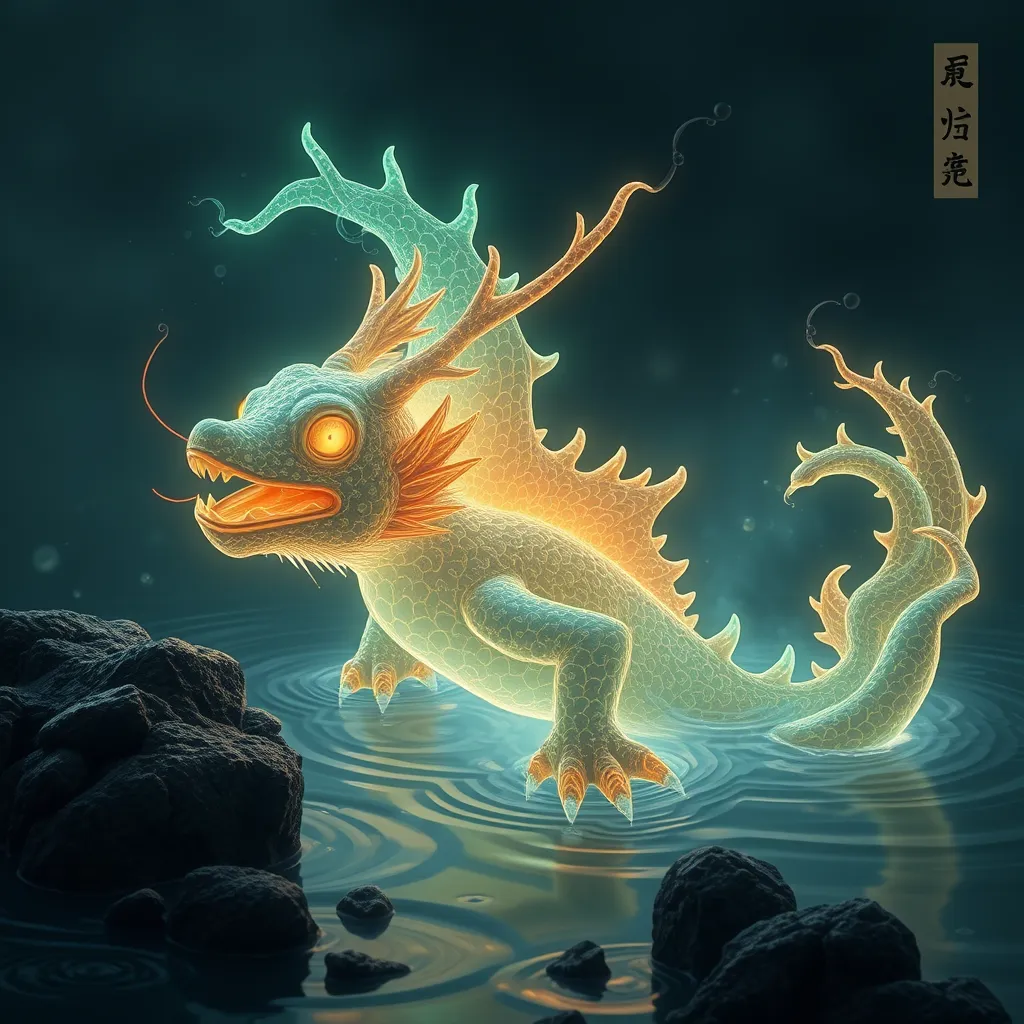The Kappa: A Water Chimera of Japanese Folklore
I. Introduction to Kappa
The Kappa, a fascinating creature from Japanese folklore, holds a significant place in the cultural fabric of Japan. Often depicted as a water-dwelling monster with a humanoid form, the Kappa embodies various elements of nature and human behavior. It serves as both a cautionary figure and a symbol of the mysteries of the natural world, making it an enduring subject of fascination.
In Japanese culture, Kappa are not merely mythical beings but are also woven into the very essence of local traditions, art, and literature. Their narrative serves to connect the people with their environment, highlighting both the beauty and the dangers of water bodies.
II. Origins and Historical Context
A. Early references in Japanese literature and folklore
The origins of the Kappa can be traced back to ancient Japanese texts and oral traditions. Early references appear in the Nihon Shoki (Chronicles of Japan), written in the 8th century, where Kappa are mentioned in connection with rivers and water-related incidents. Over time, these stories have evolved, but the core elements of the Kappa remain intact.
B. Evolution of the Kappa’s characteristics over time
Initially, Kappa were viewed as malevolent spirits, known for their mischievous and sometimes violent behavior. However, as time progressed, their characteristics softened, and they began to be portrayed as tricksters with a comical side. This evolution reflects a broader shift in societal attitudes toward nature and the creatures inhabiting it, moving from fear to a more nuanced understanding.
III. Physical Appearance and Traits
A. Description of the Kappa’s unique features
Kappa are typically described as having a greenish skin tone, webbed hands and feet, and a turtle-like shell on their backs. One of their most distinctive features is the dish-shaped depression on top of their heads, which holds water—a vital source of their power. If this water spills out, the Kappa becomes weakened and can even perish.
B. Variations in appearance across different regions of Japan
Across Japan, regional variations of the Kappa exist, which can lead to differing descriptions and attributes. For example:
- In Tōhoku: Kappa are often depicted with longer limbs and sharper beaks.
- In Shikoku: They are sometimes portrayed as smaller, cuter creatures, appealing to children.
- In Kyushu: Kappa are often shown as more aggressive and larger in size.
IV. Behavior and Habits
A. Kappa’s aquatic nature and habitat
Kappa are primarily associated with rivers, ponds, and other bodies of water. They are known to be excellent swimmers and often reside in secluded areas where they can observe human activity. Their aquatic nature informs much of their behavior, including their penchant for mischief and tricks.
B. Interaction with humans and other creatures
Kappa are infamous for their interactions with humans, often engaging in playful yet dangerous antics. Some common behaviors include:
- Challenging humans to wrestling matches.
- Stealing crops or livestock.
- Kidnapping children, particularly those who venture too close to the water’s edge.
However, Kappa can also be helpful creatures. In some stories, they are said to assist fishermen or heal the sick if treated with respect.
V. Kappa in Folklore and Legends
A. Notable stories and legends featuring Kappa
Numerous stories and legends feature Kappa, reflecting their complex nature. One famous tale is that of the “Kappa and the cucumber,” where Kappa are said to have a particular fondness for cucumbers. This story has led to the tradition of offering cucumbers to appease Kappa and keep them from causing trouble.
B. The role of Kappa in cautionary tales and moral lessons
Kappa serve as cautionary figures in many tales, warning children to stay away from deep water and respect nature. These stories often emphasize the importance of caution and respect for the environment, highlighting the Kappa’s dual role as both a trickster and a teacher.
VI. Cultural Impact and Symbolism
A. Kappa in art, literature, and modern media
The Kappa has significantly influenced Japanese art, literature, and modern media. From traditional woodblock prints to contemporary anime, Kappa are frequently depicted in various forms. They often symbolize the unpredictability of nature and the importance of harmony between humanity and the environment.
B. Symbolic meanings associated with the Kappa in Japanese culture
In addition to being a symbol of water and nature, Kappa represent:
- The balance between good and evil.
- The need for environmental conservation.
- Human curiosity and the consequences of overstepping boundaries.
VII. Modern Interpretations and Relevance
A. Kappa in contemporary Japanese society
In modern Japan, Kappa have seen a resurgence in popularity, appearing in various forms of media, merchandising, and local festivals. They are often embraced as cute characters, appealing to children and adults alike. This adaptation reflects a cultural shift towards a more playful and less fearful interpretation of these creatures.
B. The role of Kappa in environmental awareness and water conservation efforts
Recently, Kappa have been used as symbols in environmental campaigns, particularly those focused on water conservation and the protection of aquatic ecosystems. Their association with water makes them powerful figures in promoting awareness about the importance of clean rivers and lakes.
VIII. Conclusion
A. Recap of the Kappa’s significance in folklore
The Kappa is a multifaceted figure in Japanese folklore, serving as both a source of entertainment and a warning about the natural world. Its evolution from a fearsome creature to a beloved character illustrates the changing relationship between humans and their environment.
B. Reflection on the enduring legacy of the Kappa in Japanese culture
The enduring legacy of the Kappa speaks volumes about the importance of folklore in shaping cultural identity. As a symbol of nature, caution, and respect, the Kappa continues to inspire and educate, reminding us of the delicate balance we must maintain with the world around us.



